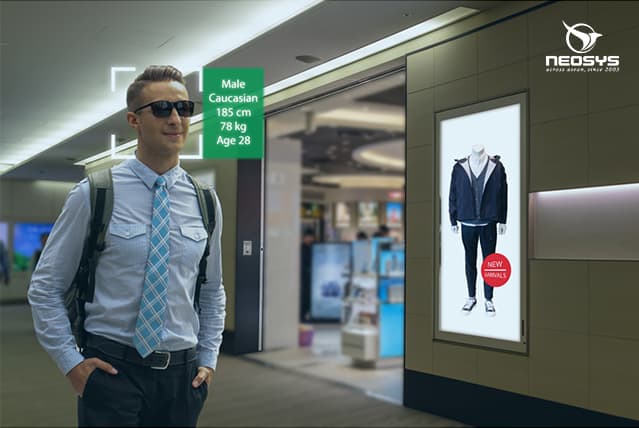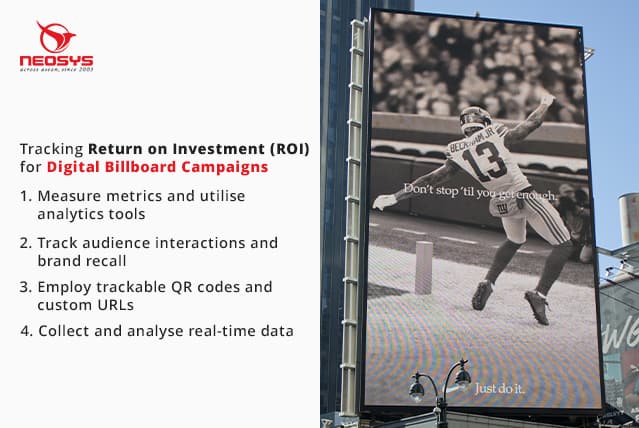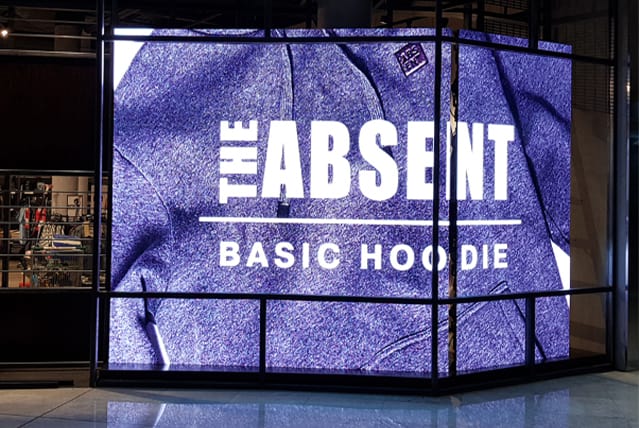In the fast-paced world of marketing, capturing your audience’s attention is a challenge that demands innovation. As businesses in Singapore navigate the ever-evolving landscape of advertising, the power of visual storytelling has become increasingly evident.
One compelling medium that is taking centre stage in this narrative is the digital billboard. These screens are not just about broadcasting messages; they are about crafting immersive stories that captivate minds and create lasting connections with brands.
In this article, we will explore how digital billboards are redefining marketing campaigns in Singapore. Whether you are already familiar with digital billboards or just starting to consider them for your marketing endeavours, this is your guide to unleashing the full potential of this remarkable technology.
Learn more: The Rise of Digital Billboards: How Technology is Transforming Outdoor Advertising
Keep reading to find out more.
Part 2 – The Role of Digital Billboards in Marketing Campaigns
2.1 The Advantages of Digital Billboards in Storytelling
The emergence of digital billboards has introduced a transformative dimension to this age-old practice, offering unparalleled advantages for modern storytellers. Let us explore the unique benefits of digital billboards in crafting compelling brand stories.
1. Captivating Visuals with Dynamic Content
A digital billboard breathes life into campaigns with visuals and dynamic content. Unlike traditional static billboards, these vibrant LED displays allow marketers to showcase a sequence of images, videos, and animations, creating a mesmerising visual narrative that commands attention. Through eye-catching graphics and seamless transitions, digital signboards entice passersby to immerse themselves in an engaging story, setting the stage for an unforgettable brand experience.
2. Real-time Updates for Timely and Relevant Storytelling
Digital signage also offers a unique advantage with its ability to deliver real-time updates, ensuring brands are in sync with the pulse of their audience. Whether it is breaking news, trending topics, or special events, marketers can dynamically modify content on digital billboards anytime and anywhere to reflect the current context. This agility allows campaigns to align with the audience’s interests, evoking immediate engagement and building a strong bond between the brand and its consumers.
3. Interactivity That Engages the Audience in the Narrative
Beyond eye-catching visuals and real-time updates, digital billboards also enable interactivity, transforming the passive onlooker into an engaged audience. Through touchscreens, motion sensors, or QR codes, viewers can interact with the content, unlocking hidden surprises or accessing personalised experiences. This two-way communication fosters a deeper connection, as customers feel like co-creators of the brand’s story, solidifying their emotional bond with the message being conveyed.
4. Leveraging Data for Personalised and Targeted Stories
By leveraging audience data and analytics collected by a digital signage system, marketers can tailor messages to resonate with specific demographics, locations, or consumer behaviours. From weather-triggered content to location-based storytelling, these billboards deliver hyper-targeted stories that make individuals feel seen and understood.
Learn more: How Digital Sign Boards Influence Consumer Behaviour
The allure of storytelling remains but digital billboards have given it new dimensions, making the brand-consumer relationship richer and more engaging than ever before. Continue reading as we delve deeper into creating unforgettable marketing campaigns with digital billboards.
2.2 Crafting Compelling Messages for Digital Billboards
A digital display sign provides a canvas for storytelling. However, the challenge lies in refining your brand’s narrative into a concise, impactful message that can capture the attention of passersby in a matter of seconds.
1. The Art of Concise Storytelling
Digital billboards offer only a few seconds to convey your message, making brevity a virtue. The key is to distil your brand narrative into a few powerful words or phrases that convey the essence of your message. A well-crafted tagline or headline can spark curiosity, ignite emotions, and leave a lasting imprint on the minds of viewers. By embracing the power of simplicity, brands can harness the full potential of digital billboards and make every second count.
2. Using Visuals to Evoke Emotions and Convey Messages
Visual storytelling is a formidable strategy that transcends language barriers and speaks directly to the heart. When using digital signage, carefully selecting images that evoke emotions aligned with the brand’s values and message is important. A powerful visual can tell a story in an instant and forge an emotional connection with the audience. The combination of striking visuals and succinct text can further create a powerful and memorable message.
3. Incorporating Call-to-Action Elements
Effective call-to-action (CTA) elements are the key to compelling the audience to take the desired next step. Whether it is urging viewers to visit a website, follow a social media account, or visit a nearby store, a well-crafted CTA prompts an immediate response. For instance, a digital billboard allows for interactive elements like QR codes, which can seamlessly link viewers to further information or promotions. The right CTA can turn a passive viewer into an engaged customer.
As you embrace the potential of these digital display signs, remember that your message should leave a lasting impression, making every viewing a memorable and meaningful encounter with your brand.
2.3 Engaging Audiences Through Interactive Billboards

Creating interactive, immersive, and memorable experiences through digital billboards can transform passive observers into active participants. Here is how:
1. The Role of Interactive Features in Storytelling
Interactive features such as augmented reality and gamification are the driving force behind the transformation of passive audiences into engaged participants. They empower audiences to explore, discover, and engage with content on a deeper level. By immersing viewers in a two-way conversation, interactive billboards break down the barrier between brand and consumer, creating a dynamic and unforgettable storytelling experience. These features create a sense of urgency, making viewers feel like they are part of something exciting and unique.
2. Creating Immersive Experiences With Touchscreens and Gestures
Digital billboards equipped with touchscreens and gesture recognition technology open up a world of possibilities for immersive storytelling. With a simple touch or wave of a hand, audiences can trigger content transformations, access additional information, or explore different story branches. Touchscreens offer intuitive navigation, enabling viewers to dive deeper into the story at their own pace. By creating interactive touchpoints, brands provide an element of playfulness and discovery that captivates audiences and makes the brand narrative all the more memorable.
3. Utilising QR Codes and NFC Technology for Audience Interaction
In the age of smartphones, QR codes and NFC (Near Field Communication) technology have become valuable tools for audience interaction. QR codes, when scanned with a smartphone, can lead viewers to websites, social media pages, or exclusive content, expanding the storytelling experience beyond the digital billboard itself. Similarly, NFC technology enables seamless engagement by simply tapping a compatible device near the billboard. These technologies bridge the gap between the physical and digital worlds, empowering audiences to access additional layers of storytelling. Moreover, they provide marketers with valuable data insights into consumer behaviour, allowing for further refinement of storytelling strategies.
By crafting immersive experiences, brands can delight, engage, and leave a lasting impression on their target audience.
Part 3 – Guide to Making Digital Billboards Work Wonders
3.1 Targeting the Right Audience
Digital billboards are not just about grabbing attention; they are about engaging the right audience with stories that resonate. To achieve this, marketers need to employ sophisticated targeting strategies that leverage data and technology.
1. Leveraging Data for Audience Segmentation and Profiling
Data is the bedrock of effective audience targeting and leveraging it allows marketers to segment their audience based on various criteria, such as demographics, interests, behaviours, and past interactions. Brands gain valuable insights into their customers’ preferences, pain points, and aspirations, enabling them to craft highly targeted and personalised messages. Audience segmentation and profiling pave the way for delivering narratives that resonate deeply with specific groups, making the storytelling experience more relevant and engaging.
2. Tailoring Messages to Specific Demographics and Locations
Considering the location of the digital signage adds a layer of customisation. Localised storytelling allows marketers to weave narratives that connect with the cultural nuances and regional characteristics of a particular area. By recognising the diversity of their audience and catering to their unique needs, brands strengthen their storytelling impact and create a sense of personal relevance. For example, a digital billboard in one neighbourhood can tell a different story than one in another, both tailored to the specific interests and expectations of their respective audiences.
3. Geotargeting and Its Impact on Storytelling
Digital billboards, with their dynamic capabilities, can harness geotargeting to ensure that messages are contextually relevant to the audience’s physical surroundings. For example, a restaurant chain could showcase a special offer on digital signboards near its branches during lunchtime, enticing hungry passersby to visit.
4. Ethical Considerations in Data-Driven Storytelling
While data-driven storytelling is a powerful tool, it comes with ethical responsibilities. Respecting user privacy and obtaining consent for data collection are critical aspects of data ethics. Brands must be transparent about their data practices, ensuring that customers understand how their data is used and protected. Data privacy and ethical considerations are essential for maintaining trust and credibility in audience targeting.
In the world of digital billboards, precision is key. Focusing on the right audience can amplify the impact of storytelling and create lasting connections with viewers.
Learn more: Exploring the 4 Best Digital Billboard Solutions in Singapore
3.2 Tracking Return on Investment (ROI) for Digital Billboard Campaigns

Measuring the ROI for digital billboard campaigns is crucial to ensure that marketing efforts are not only reaching the right audience but also generating tangible results. Here is how:
1. Metrics and Analytics Tools for Evaluating Campaign Performance
To track ROI effectively, marketers need to start with the basics. Metrics such as impressions, reach, and frequency are fundamental in gauging the campaign’s visibility and audience exposure. Click-through rates (CTR) or interactions with interactive digital display signs also offer insights into audience engagement. Time-of-day analysis helps identify peak traffic periods for optimal content display. Additionally, advanced analytics platforms enable more in-depth assessments, such as dwell time, conversion rates, and demographic breakdowns, providing marketers with a comprehensive understanding of campaign performance.
2. Analysing Audience Engagement and Brand Recall
Metrics like dwell time, which indicates the average time viewers spend looking at the billboard, reveal the level of interest generated by the content. Tracking interactions, such as touch interactions or QR code scans, provides valuable data on the audience’s willingness to engage with the brand. Post-campaign surveys and recall tests measure brand awareness and message retention, helping to evaluate the long-term impact of the campaign.
3. The Relationship Between Digital Billboards and Online Conversions
Digital billboards serve as powerful catalysts that drive online conversions. By employing trackable QR codes, custom URLs, or social media handles, marketers can directly measure the number of consumers who took action after seeing the billboard. Online conversions can include website visits, app downloads, email sign-ups, or product purchases. This direct link between the billboard and online actions provides a clear measure of ROI.
4. Optimising Campaigns Based on Data-Driven Insights
Data is the key to optimising digital billboard campaigns. Through real-time updates and content rotation, marketers can respond to audience preferences and adjust strategies accordingly. By continuously analysing the data, it is possible to fine-tune campaigns for maximum impact, ensuring that every impression counts.
Utilising a combination of metrics, data analytics, and strategic adjustments empowers marketers to ensure their digital billboard campaigns are not only memorable but also effective in achieving their goals.
3.3 Maximising Impact With Strategic Placements
The art of maximising impact begins with selecting prime placements that can turn a static message into a dynamic, memorable story. Here is how strategic placements can make all the difference:
1. Identifying Prime Locations for Digital Billboards

Careful consideration of factors such as high foot traffic areas, busy intersections, and popular tourist spots is essential. These locations offer maximum exposure to a diverse and engaged audience, increasing the chances of message retention. Choosing a prime location guarantees that your story is seen by the right people at the right time, making it more impactful.
2. Understanding the Demographics and Traffic Patterns
To truly connect with your audience, it is essential to understand the demographics of the area surrounding your digital signage. Demographic data helps in tailoring messages that resonate with the specific characteristics and interests of the local audience. Additionally, analysing traffic patterns, both pedestrian and vehicular, helps you gain insights into peak hours and the flow of people. This enables precise scheduling for content rotation, allowing your message to reach the maximum number of potential customers when they are most receptive.
3. Integrating Billboards Into Surrounding Aesthetics
Digital billboards are eye-catching, but they should also seamlessly blend into the surrounding aesthetics. Successful integration ensures that billboards complement the architectural style, colours, and ambience of the area. Striking the right balance between being striking and visually appealing while avoiding visual clutter is vital to maintaining the billboard’s effectiveness. An integrated, well-designed billboard not only captures attention but also adds to the overall aesthetics of the space, creating a positive brand image.
When these elements align, your billboard leaves a lasting impact and that is where the true value of strategic placements shines.
3.4 Answering Frequently Asked Questions About Digital Billboards
Digital billboards have transformed the advertising landscape, but with this exciting innovation come questions. We address the most frequently asked questions about digital signage systems, unlocking the answers you have been seeking.
1. How do digital billboards work?
Digital billboards operate by using a network of LED or LCD panels to display content. Advertisements or messages are uploaded to a central content management system, which can be controlled and updated remotely. This allows marketers to change content, schedule ads, and target specific audiences with ease.
2. What types of content can be displayed on digital signboards?
They can display a wide range of content, including static images, animated graphics, videos, and interactive elements. Content can be tailored to suit the marketing campaign’s objectives and creative vision.
3. Are digital billboards more expensive than traditional billboards?
While the initial investment in digital billboards may be higher, they can be more cost-effective in the long run due to their ability to display multiple ads and reduce printing and installation costs.
Digital Billboards: Where Stories Come to Life

Digital billboards have undeniably reshaped the landscape of advertising, offering brands a transformative platform to engage and forge lasting connections with audiences. As technology continues advancing, the role of digital signboards is poised to become even more integral in shaping brand narratives and adapting to the ever-changing needs and expectations of consumers.
If you are seeking to harness the full potential of a digital billboard, look no further than Neosys. With a range of cutting-edge digital billboards that seamlessly combine innovation, creativity, and functionality, Neosys stands as your go-to partner for taking your marketing campaigns to the next level.
Learn more: Why Neosys Excels in Digital Billboard Solutions
Get in touch with the team to find out more about their products.
